Brodak’s Fly-In 2009 Report
courtesy of Chris Sarnowski
Brodak’s Fly-In was held from June 16th to June 20th this year. It’s a multi-event contest that takes place in John and Buzz Brodak’s back yard. It’s a very large yard, by the way, with space for six control line circles and pit areas. And space for the Brodak’s house, garage, pool, etc.
Brodak’s is a great place to see different control line events, as well as fly some combat. It’s also a great place to meet control line modelers from different areas of the country. Everyone seems to be happy to be there and really enjoying themselves. As David Midgely said to me before the trip, it’s your own fault if you don’t have a great time! I drove down with Woody Midgely, and we met up with Dick Carville, Len Harding, Dick Wolsey, and Norm Liversidge at the contest, all of whom I fly with at the 107th R/C club.
I was happy to see a few events that I had never seen before: Racing and Carrier. At last year’s Combat Fun-Fly (Wompatuck State Park) we had some clown racing, but these guys were a bit more serious about it. There were 3 pilots and their airplanes in the circle for most heats. The pit men wore helmets so that they could safely retrieve the airplanes for refueling. Al Ferraro and his team from Middlesex Modeller’s Club did well in racing. By the way, those racing pit men can really start an engine! I’ve never seen anyone flip a prop so fast without a starter. Things got a bit interesting in one heat that I watched. There were a few inexperienced pilots, one with some control issues (accidental loops and oscillations) and another who tried to pass by going underneath the other airplane (bad idea).
I thought Carrier was an interesting event. One of the pilots took the time to show me his airplane. It was a mechanical marvel, with sliding leadouts and landing hook triggered by motions at the handle. Plus a 3rd wire throttle for high speed and low speed laps. The low speed laps are flown after the high speed laps, and the sliding leadout is used to point the nose of the ship to the outside of the circle. This maintains line tension for the low speed laps. I watched a few competition Carrier flights, too. Landings seemed difficult, as the few pilots that I saw attempt had slammed the carrier deck but didn’t catch any landing wires. One pilot caught a bad gust and put the airplane down into the grass. Looks like Carrier pilots know how to build airplanes that bounce, too.
Stunt is a big attraction at Brodaks. There are many events to enter: Old Time, Classic, Nostalgia ’79, and PAMPA. Each of these is broken down into 4 skill levels: Beginner, Intermediate, Advanced, and Expert.
Between Dick Carville, Dick Wolsey, Norm, and myself, we had entries in each event and one or more skill levels. Happily, we brought back some trophies and I did not crash. There were many interesting and well-built stunt models, and you can see some great photographs in the “Open Discussion” forum at the Stunt Hangar web site (www.stunthangar.com/smf).
There were two Combat events at the contest, Speed Limit and WWII Combat. The Speed Limit event had about 22 entries, with 18 pilots actually flying. Phil Cartier organized the events, and it was great to see him as well as Louis Lopez, Roy Glenn, and Al Ferraro. I was also able to put faces to some names that I had heard – Rick “Catdaddy” Blankenship, Brad LaPointe, and Paul Smith. Scott Schmidt and his son Alex came out from the Washington DC area, too. Some of you might remember Alex from last year’s Hershey, PA meet.
Norm Liversidge and Dick Carville helped out at the Speed Limit event by counting cuts and keeping track of air time. I think they had almost as much fun as the pilots did. I had a good match with Dan Bierke from the Canadian Balsa Beavers Club. Louis and Roy put up some great flights, with Louis finishing in 1st place and Roy taking 3rd. Scott Danford, who is working with Roy and Louis, took 2nd place. Brad Lapointe landed in 4th place, and I followed him in 5th place. There were a few scary fly-aways at the speed limit event, one of which was due to “irrational exuberance” of a pilot trying to assert control of his line-tangled ship. Reminder that it is better to safely put your model into the ground, rather than pull hard on the lines to keep it in the air.
WWII Combat had 8 entries, with 5 pilots actually flying. Models entered included an FW190 (Phil C), a Nakajima Ki-27 “Nate” (Paul Smith), an F6F Hellcat (Rick B), an ME-109 (Howard Shenton), and a P40 Warhawk (Brad Smith). I pitched in counting cuts, along with Tom Skinner and Dennis Moritz. Points were awarded for model appearance and authenticity, while match scoring was the same as the Speed Limit event. Paul Smith did well on appearance points, and his “Nate” was one of the better performers. Wind was a big factor in the WWII combat event, and the large side area of the models wasn’t helpful. Clouds moved in towards the end of the event, and the final match was flown in a downpour. Howard and Paul flew in this final match, and received the award for the “Most Memorable Match”.
Scale was also flown at Brodak’s, with some very nice models. One scale pilot flew his event in the very same downpour that Howard and Paul enjoyed in their final match. Apparently the scale model just motored right along in the rain, no problem whatsoever.
There were members from many well-known clubs at the Fly-In: Tulsa Glue Dobbers, Balsa Beavers, Philly Flyers, and the Garden State Circle Burners. Other well-respected clubs put in good showings as well: Middlesex Modellers, Washington DC Sky Lancers, and Harrisburg AeroModelling Society, to name a few.
All in all, it was a great event. Thanks to John Brodak and his family for hosting the contest, and I’m looking forward to next year’s Fly-In.
Note: Pictures courtesy of Elwin Aud.
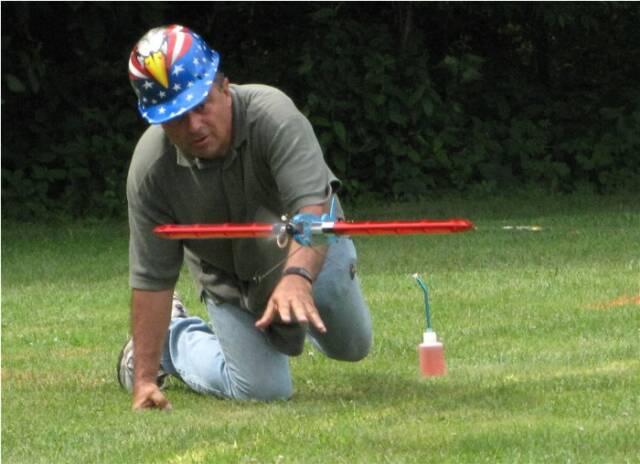
Clown Race Pit Stop
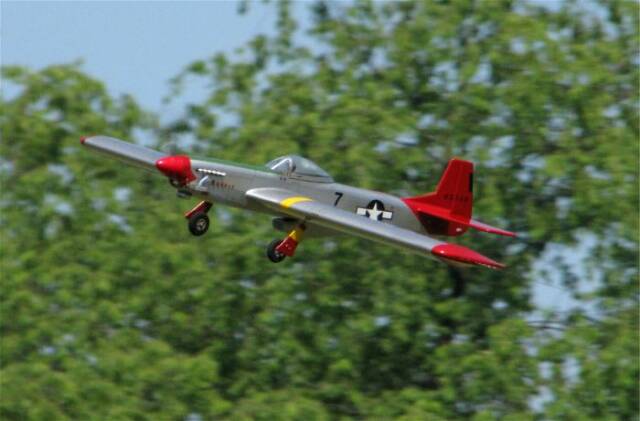
Dick Carville's Mustang Stunter
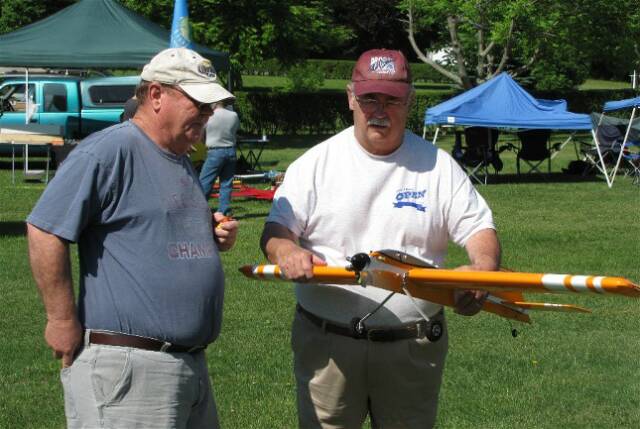
Norm Liversidge and Dick Wolsey
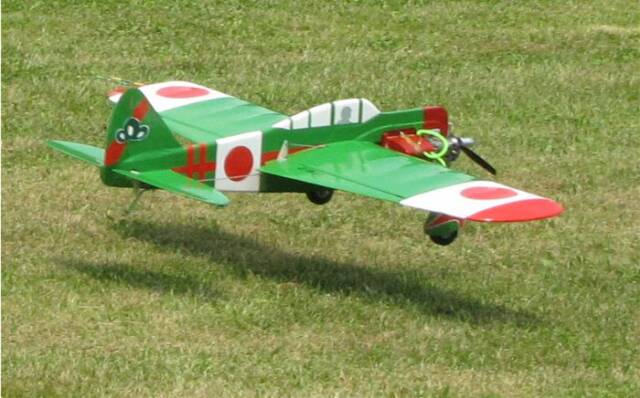
Paul Smith's Nate
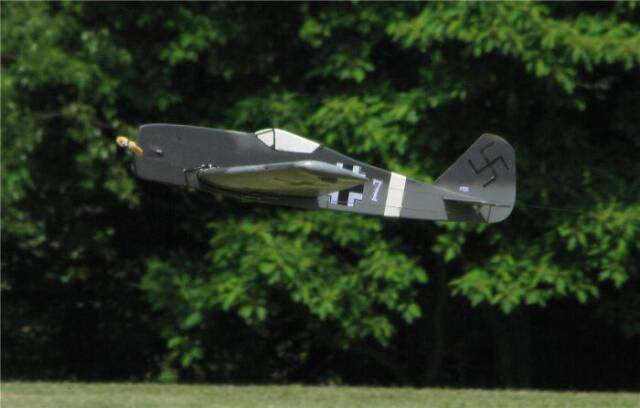
Phil Cartier's FW-190
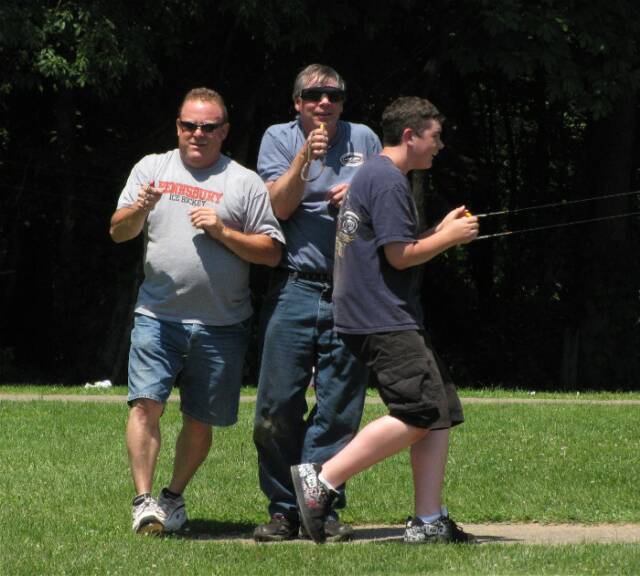
Racing Pilots